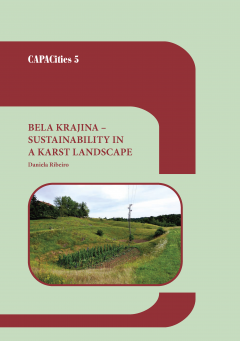Bela krajina. Sustainability in a Karst Landscape
Sustainable development in karst areas should be adapted to its specificities and take into account its vulnerability. Since the assessment of the development potential and management of karst areas is of great importance in Slovenia, the author analysed the impact of landscape features on the land use and sustainable development in Bela krajina, as a study region. The monograph is divided into three main parts, essentially based on the approaches used to analyse the selected karst landscape. Firstly, an assessment of the degree of human disturbance to the karst environment in Bela krajina was done, using an environmental index specific for karst areas, referred to as the ‘Karst Disturbance Index’. The Karst Disturbance Index classified the degree of disturbance in Bela krajina as low. In the second part, two case studies were selected (the settlements of Adlešiči and Bojanci) for an indepth study of landscape changes, through land use changes, over the previous 200 years. The results of these analyses confirmed the land abandonment and overgrowth of agricultural land in both case studies, however at different rates. Socioeconomic aspects were found to be the most important drivers of land use changes in these case studies. In the third part, quantitative analysis (through the use of sustainable development indicators) and qualitative analysis (through structured interviews) of the landscape features for sustainable development was performed. By means of a comparative approach the reasons for the differences in landscape structure and development in Bela krajina were discussed. According to the quantitative analysis, Semič is the most sustainably developed municipality, whilst Črnomelj was identified as the least sustainably developed municipality in the study region. The results from qualitative analysis of landscape features using interviews didn’t show many differences among the municipalities. However, some differences among different stakeholders were perceived. The ways in which the karst landscape influences local development mentioned by local stakeholders were that: it hampers agriculture, hampers the building of houses and other infrastructure, and it is vulnerable to pollution. Karst landscape features affect sustainable development positively and negatively, according to local stakeholders. The positive effects were mainly connected with tourism, and the negative effects were mainly connected with hampered agriculture. Thus karst landscape features cannot only be seen as limiting factors, but also as having their own development potential.
Downloads

Series
License

This work is licensed under a Creative Commons Attribution-NonCommercial-NoDerivatives 4.0 International License.
